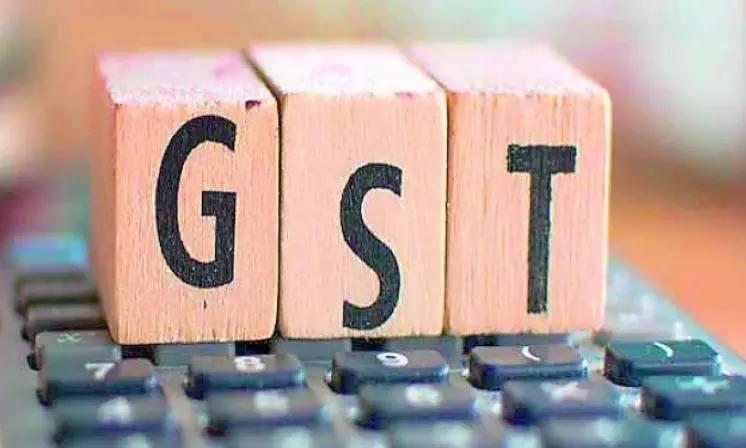Pradeep S. Mehta and Tasmita Sengupta | Is GST 2.0 Back to Its Core Principles: Focus on Simplicity, Fairness, Efficiency?
By Pradeep S. Mehta,Tasmita Sengupta
Copyright deccanchronicle

“Simplifying taxes and removing cascading effects is critical for enabling free markets to flourish”, said the noted economist, Jagdish Bhagwati. GST was a step in that direction, but it took us eight long years since its rollout to bring in GST 2.0.Earlier this year, in an opinion piece, we had argued for the need to correct inverted duty structures and do away with classification disputes fabricated by artificial segmentation. Examples include the popular debate on caramelised and salted popcorns. The central idea being reduction in inequalities for improving ease of living for consumers, and enhancing competitiveness for doing business.The Union government’s introduction of reforms in the so-called Next-Gen Goods and Services Tax, by scrapping its four-tiered tax slabs into two (five per cent and 18 per cent), with an additional 40 per cent for “sin” goods, are both much-awaited and timely. The reforms also aim at improving investment and trade facilitation through seamless registration, simplified return filing, and fast-track refunds. The reforms have rightly targeted the middle class and lower income group people, farmers and MSMEs, the backbone of our economy. These measures aim to boost domestic consumption and promote “Atma Nirbharta” amidst the global market uncertainties and the growing tariff tantrums by the administration of US President Donald Trump.But what took us so long? India is well known for its complex web of laws and regulations filled with jargon, making compliance difficult for both businesses and consumers. This creates ambiguities and paves way for bureaucratic hurdles that delay processes, quite often harasses, frustrates and discourages entrepreneurs, particularly affecting small businesses at every step, from GST registrations to obtaining refunds. What could have been achieved years ago is only now being realised partially, despite earlier progressive efforts like the establishment of the GST Council, rooted in cooperative federalism.Now, as India stands at a critical juncture, the focus should extend beyond streamlining refunds and registrations for creating an integrated tax system. Simplifying existing laws and regulations, as being done for the onerous Income-Tax Act, is equally essential. This will ease compliance by reducing complexity and cutting costs linked to technical legal language interpretation.The government should set clear timelines for processing refunds, which is crucial to reduce working capital blockages, similar to the call for an automated, risk-based registration process. A centralised, uniform GST registration system across all states will further help businesses to thrive across states. That is the main goal of GST, or as we said, that it is a Free Trade Agreement with India.However, ease of doing business still remains uneven despite the tax cuts. The rates for essential consumer and aspirational goods have been reduced. However, coal tax rates have risen from five per cent to 18 per cent, and petroleum fuels and alcohol are still outside the GST framework. Power tariffs will further escalate in many states, increasing business costs which is most likely to be passed on to consumers. This shows that GST reforms are still a work in progress.The real challenge lies in implementation, like any other policy. The government must secure active cooperation from both the states and businesses. This will ensure that tax benefits reach consumers, the last-mile beneficiaries, rather than being gobbled up by companies. This is especially important as input tax credit accumulation has been curtailed. Trust and accountability are essential. Robust price monitoring across sectors, reintroducing anti-profiteering provisions, and rewarding timely, accurate filings through a bonus-malus approach will help maintain transparency.Fraud can further be minimised through blockchain-based payment systems, which securely records every transaction and reduces human intervention. Additionally, the digital interface should be user-friendly, rather than just another single-window portal. A simple, accessible process will lower entry barriers, encourage entrepreneurship, and ensure businesses are not discouraged.The GST reforms have travelled a long way by reducing tax slabs on essential commodities, agricultural products, textiles, medicines, automobiles, and other goods. The aim is to create positive externalities through the fiscal multiplier — boosting consumer demand, increasing production, attracting private investment, and creating jobs, thus forming a virtuous cycle of growth. This will encourage formalisation of businesses. After the Covid-19 pandemic, India’s private consumption was weak but is expected to gain momentum through the revised GST rates. This will strengthen trust in the taxation system among consumers and businesses.Although some states have raised concerns about short-term revenue losses, this is a temporary effect of reducing tax rates. Revenues are…



